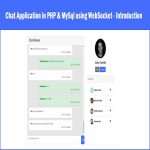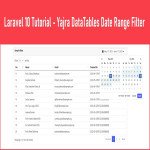How much money can you make from blogging?
Just like any profession (Doctor, Lawyer, financial advising), there are different levels of bloggers who are earning anywhere from $1000-$2 million a year. I make close to a million dollars a year with the help of blogging.
In this article, we’ll provide you a beginner’s guide to making money blogging: 5 tips on getting started followed by 5 monetization tips for a total of 10 simple steps. Whether you’re seeking a new side hustle or aiming to earn a full-time income as a blogger, these ideas will get the wheels turning so you can soon achieve your goals.
Use this step-by-step guide to get yourself situated and begin your new blog to build a robust audience and start earning money.
1. Choose a profitable niche
If you’re just starting a blog, you're probably asking yourself—What should I write about?
Before you dive into writing, you’ll need to select a niche. Pick one overarching theme in a particular field for your blog to attract a targeted group of fans.
Start with your passions when selecting your niche—after all, you’ll dedicate lots of time and effort to this subject. But if you seriously want to make money blogging, you also need to think about what subjects people will want to read about, and if those subjects are financially viable.
Look at Cup of Jo, for example, a daily women’s lifestyle site that explores topics like food, culture, style, travel, relationships and parenting. Founded in 2007, the popular blog “receives over 4 million monthly page views and almost 1 million monthly unique visitors,” according to the site. By narrowing in on a specific niche and providing relevant and relatable content to the right audience, founder Joanna Goddard has cultivated a strong community and deeply engaged readership.
With that in mind, ask yourself these three questions when choosing a blog niche:
What are my interests?
Who is my audience?
Which topics are profitable?
2: What are my interests
You’ll want to write about a topic you’re passionate and knowledgeable about to sustain your blogging efforts for the long term.
Consider your level of professional experience as well. If you have no prior connections to your blogging niche, you’ll find it harder to establish yourself as a credible source in that industry.
On the other hand, if you have work experience, educational background or connections in a particular field, you can write blog posts about those subjects and build trust among your readership. Take a look at these blog ideas—they'll jumpstart your imagination
3.Choose a Name and Get Online.
The next step in creating a successful blog is to choose your blog’s name and get your blog online. Your blog name represent you, your business, your core blog topics, or some combination of the three. If possible, incorporate your niche into your blog title to help people immediately understand what your blog is about. Think about what sort of personality you want your blog to have s a service that allows bloggers to create, manage, and publish their blog content on the internet (it’s essentially a website builder). Some popular blogging platforms include WordPress, Wix, Weebly, and Squarespace (although there are tons out there). Do some research and find out which one is best for you.
you can get free websites here:- https://darwinbark.com/products/blog-
management-app-and-website
4. Design & Optimize Your Blog
Create a Consistent Design
Having a good and consistent design for your blog builds trust; it communicates to your audience that you care about your blog enough to put in a genuine effort to make it appear engaging or professional. However, that does not mean that you should crowd your blog with wild graphics and formatting. Instead, sticking with a crisp, clear, and easy-to-read format is a solid starting point. Many people are visual learners, meaning that whether they intend to or not, they will judge your blog and its perceived functionality immediately upon seeing your webpage. Even if you are producing good content, if your blog is difficult to navigate and visually confusing, people will associate your blog with the messy visual aspects rather than the actual content. In short, design matters. Here are some design tips to follow:
Make sure all your posts are readable — consider font type and size (for example, try using a crisp sans-serif font).
Use subheaders to break up your text. Section out your blog article in shorter easy-to-read sections.
Use text stylings to emphasize certain parts of your text — think of underlining, bolding, and italicizing.
5. Optimize for SEO
SEO stands for Search Engine Optimization, which is the practice of optimizing your website so that search engines can more easily find you and better understand your content. Specifically for blogging, optimizing for SEO helps search engines identify your blogging content, which helps more people organically find your blog.
First, it’s important to get indexed by search engines. You need to let Google know that your blog exists in the first place. To do this, you need to submit your sitemap to Google Search Console. Once your blog is indexed by Google, this also opens up the ability for you to track your blog’s metrics (which we will talk about in a later section).
Next, you want to optimize your posts on the keyword level. Use free resources such as Google Trends or Google’s Keyword Planner to search for trending keywords with high search volume. Make sure to include those keywords in the headers. These headers will catch people’s (and Google’s) attention. Make sure to describe what your blog post will be about in your header title. Use subheaders to divide your blog and explain what each subsequent section will be about.















